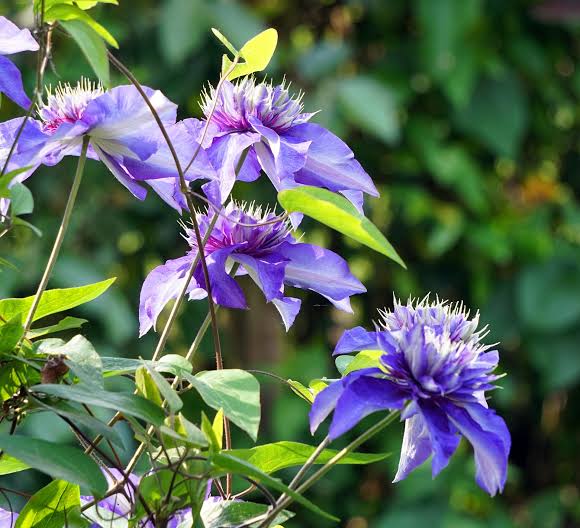Flowers are often associated with beauty, fragrance, and life, but not all blooms are as innocent as they appear. Hidden behind vibrant petals and lush foliage, some flowers carry toxic compounds that can be harmful to humans and animals. While this might sound alarming, learning about these plants is not just fascinating—it’s also essential for safe gardening and landscaping.This article will show you how to appreciate and manage 👌 so simple, so clever: poisonous flowers done right! From recognizing common toxic species to using them safely in ornamental gardens, we’ll explore both the beauty and cautionary side of poisonous flowers. Whether you live in the United States, United Kingdom, or Canada, this guide will give you the knowledge to handle these plants responsibly while still enjoying their charm.Why Learn About Poisonous Flowers?It may seem unusual to spotlight toxic plants, but there are several good reasons:Safety First: Many poisonous flowers can cause irritation, nausea, or worse if ingested.Pet Protection: Dogs, cats, and livestock are particularly vulnerable to certain blooms.Garden Planning: Some of the most stunning flowers, such as foxgloves and oleanders, are also toxic.Educational Value: Understanding the double-edged nature of flowers deepens our respect for nature.That’s why learning how to handle 👌 so simple, so clever: poisonous flowers done right! is both practical and rewarding.Common Poisonous Flowers You May Recognize1. Foxglove (Digitalis purpurea)With tall spikes of purple or pink blooms, foxgloves are a favorite in cottage gardens. However, they contain digitalis glycosides, compounds that can affect the heart if ingested.2. Oleander (Nerium oleander)Often grown in warm U.S. climates, oleander is both beautiful and extremely toxic. Every part of the plant, including its smoke if burned, is poisonous.3. Lily of the Valley (Convallaria majalis)Adored for its sweet scent and delicate white bells, this plant hides cardiac glycosides that can be fatal if eaten.4. Daffodils (Narcissus spp.)While daffodils are springtime icons in the U.K. and Canada, their bulbs and sap can cause nausea and vomiting.5. Monkshood (Aconitum napellus)Also known as wolfsbane, this striking flower contains alkaloids that affect the nervous system. Even skin contact can cause irritation.These are just a few examples of why knowledge matters when dealing with 👌 so simple, so clever: poisonous flowers done right!The Beauty and Danger of Poisonous FlowersOrnamental AppealDespite their toxicity, poisonous flowers often hold high value in landscaping. Their vibrant colors, unique shapes, and seasonal displays make them popular among gardeners. Foxgloves and daffodils, for instance, are staples in many ornamental gardens.Symbolism in CultureThroughout history, poisonous flowers have symbolized mystery, power, and even romance. The Victorians used them in floriography (the language of flowers), where meanings were hidden in a bouquet’s composition.Natural Defense MechanismThe toxicity of these plants is a clever survival strategy. Their compounds deter animals and insects from eating them, allowing the plants to thrive. That’s why we say: 👌 so simple, so clever: poisonous flowers done right!Practical Tips for Handling Poisonous Flowers1. Planting WiselyChoose safe zones for poisonous plants—avoid areas where children or pets play.Use barriers, such as raised beds, to separate them from high-traffic areas.2. Wear Protective GearAlways use gloves when planting, pruning, or disposing of toxic flowers.Wash hands and tools thoroughly afterward.3. Label ClearlyIf you grow multiple species, label poisonous flowers for quick identification.This is especially useful in community gardens or shared spaces.4. Educate Family and VisitorsTeach children never to taste or handle unknown plants.Inform guests or neighbors if you grow highly toxic varieties like oleander.5. Dispose of SafelyDo not compost poisonous flowers. Instead, bag them securely and place them in the trash.Never burn oleander or other highly toxic plants, as fumes can be harmful.Balancing Beauty and SafetyGarden Design with CautionA clever approach to gardening is mixing poisonous flowers with safe species. This maintains visual appeal while reducing overall risk. For example, plant daffodils near the edge of your yard for a spring show, but keep play areas filled with non-toxic blooms like sunflowers or marigolds.Container GardeningGrowing toxic flowers in pots can help limit access. Place containers on patios or balconies, where they’re admired from a safe distance.Wildlife ConsiderationsInterestingly, many toxic flowers still support pollinators. Bees and butterflies may visit foxgloves or monkshood without harm, making these plants valuable for biodiversity when handled responsibly.That’s the essence of 👌 so simple, so clever: poisonous flowers done right!—finding harmony between beauty and caution.Regional ConsiderationsUnited StatesSouth and West: Oleander thrives but poses high toxicity risks.Northern States: Daffodils and foxgloves dominate spring gardens.Always check USDA plant hardiness zones before planting.United KingdomFoxglove and monkshood are commonly found in cottage gardens.Lily of the valley is especially beloved but requires careful handling.CanadaCold-hardy poisonous flowers like daffodils and monkshood grow well in many provinces.Shorter growing seasons may limit species variety but not toxicity.Why Awareness MattersPoisonous flowers are part of our natural and cultural heritage. Instead of avoiding them altogether, learning to respect and manage their risks allows us to enjoy their beauty responsibly. By understanding the unique balance of danger and delight, you can truly practice 👌 so simple, so clever: poisonous flowers done right!ConclusionPoisonous flowers remind us that beauty can come with hidden risks. From foxgloves in a cottage garden to oleanders in warmer landscapes, these plants demand respect but also reward us with stunning displays. By choosing planting sites carefully, using protective gear, and educating family and visitors, you can enjoy the elegance of these blooms without fear.So, next time you’re planning your garden, consider the hidden stories behind your flowers. With the right knowledge and precautions, you’ll be able to say with confidence: 👌 so simple, so clever: poisonous flowers done right!

